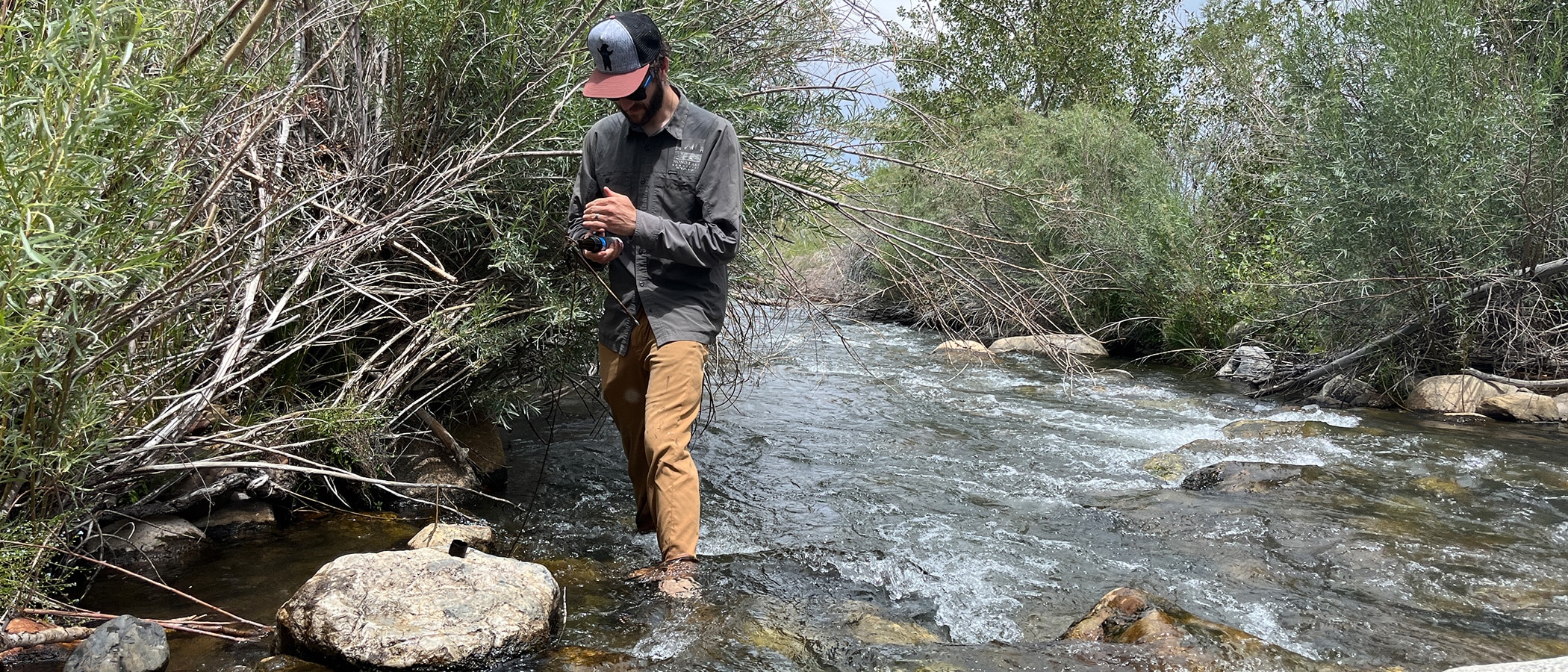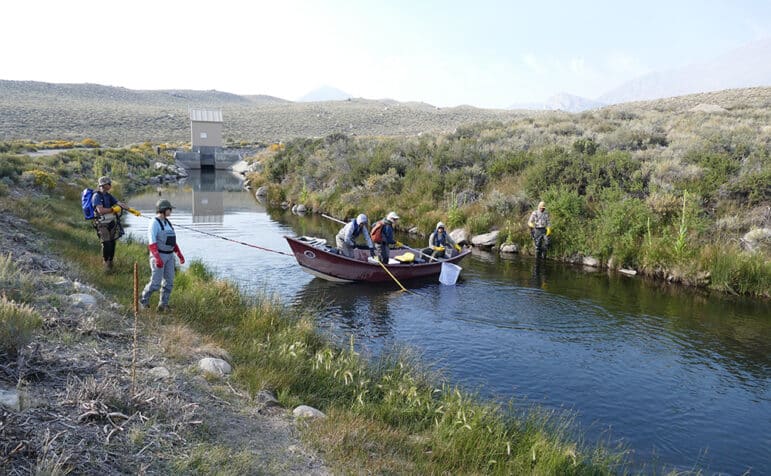
One year ago, the California State Water Resources Control Board issued Order 21-86, mandating enhanced requirements for the restoration of 20 miles of stream habitat in the Mono Basin (see Fall 2021 Mono Lake Newsletter). The order launched a new era of restoration, including specific programs directed toward advancing restoration, one of which is the formation of the Mono Basin Monitoring Administration Team (MAT).
Developing a functioning MAT has required a year of collaborative work led by the Mono Lake Committee and California Trout together with the California Department of Fish & Wildlife and the Los Angeles Department of Water & Power (DWP) to set up protocols and secure a fiscal administrator to manage the restoration funds deposited by DWP. As of this fall, MAT-coordinated independent research is now underway.
A legacy of research in greater focus
The Mono Basin fisheries monitoring program was the first project to be funded and began in September. The project focuses on assessing the condition of brown and rainbow trout in Rush, Lee Vining, and Parker creeks through hands-on evaluation of the fish along with other data collection. Fisheries monitoring for the State Water Board has a long history in the Mono Basin and this work is now collaboratively managed under the MAT.
Ross Taylor returned to lead the fisheries monitoring—this is his 26th year conducting the monitoring, but his first under the streamlined process facilitated by the MAT. In past years, Taylor was required to contract with DWP directly and utilize DWP field technicians for monitoring work. Now, under the MAT, Taylor is operating as a fully independent researcher, using his own staff and resources. His results and analysis will be shared directly with the MAT members and State Water Board, which will efficiently inform management and operation decisions that affect Mono Basin streams.
Fishing for data
Taylor and his associate field researchers conducted electrofishing sampling in four different sites: the mile-long Mono Gate One Return Ditch, Rush Creek upstream of Highway 395, the Rush Creek bottomlands, and Lee Vining Creek below the Lee Vining diversion dam.

The electrofishing spanned ten days of sampling, during which researchers gathered data on fish numbers, age class, and condition. Electrofishing temporarily stuns fish and allows researchers to safely handle the trout, take measurements, and assess their health. The work is not easy, and it involves operating carefully with safety gear in water that can be charged with upwards of 700 volts and two amps. Researchers also installed temporary fencing at each section of creek, above and below each electrofishing reach, to stop fish from entering or leaving the sampling sections. Maintaining the sampling sections is a significant chore in the work, requiring that researchers keep the fencing and screens free from leaves, sticks, and other stream debris. These sampling sections are established, long-term monitoring reaches and provide year-to-year comparisons of the fish population.
Monitoring for success
Stream temperature data is another component of Taylor’s fisheries monitoring; he asked Committee staff to help collect temperature data on Mono Basin creeks, in Grant Lake Reservoir, and along neighboring aqueduct infrastructure. In a drought year like this one, water temperature is a critical factor in the condition and distribution of trout. Following Taylor’s protocols, Committee staff deployed and recovered data loggers from June through September to help inform the success of adaptive management actions to maintain fish habitat conditions in Rush Creek while Grant Lake Reservoir is low. These low water levels result in warmer, more turbid water, a detrimental combination for trout populations when the water is then released downstream into Rush Creek.
State Water Board Order 21-86 anticipated challenges like this, and through specific requirements that include the development of an Annual Operations Plan and Mono Basin Operations Plan, lays out a thoughtful, integrated process for minimizing impacts to fish using science and monitoring to inform adaptive management decisions. Science directed by the State Water Board, funded by DWP, and coordinated by the MAT will be used to efficiently restore and recover Mono Basin stream habitat and fisheries toward pre-diversion conditions.
Science-fueled restoration
The new State Water Board-ordered structure for overseeing research and monitoring activities is working. The MAT has adopted protocols for collaborative decision-making among all its members—the Mono Lake Committee, California Trout, California Department of Fish & Wildlife, and DWP—and is now making on-the-ground and on-the-water projects possible. Under MAT administration these research projects are more efficiently integrated into the restoration decision-making process and are enabling the recovery of more than 20 miles of stream habitat in the Mono Basin ecosystem.
This post was also published as an article in the Fall 2022 Mono Lake Newsletter. Top photo by Robbie Di Paolo: Collecting water temperature data on Mono Basin creeks is an important component of fisheries monitoring.
